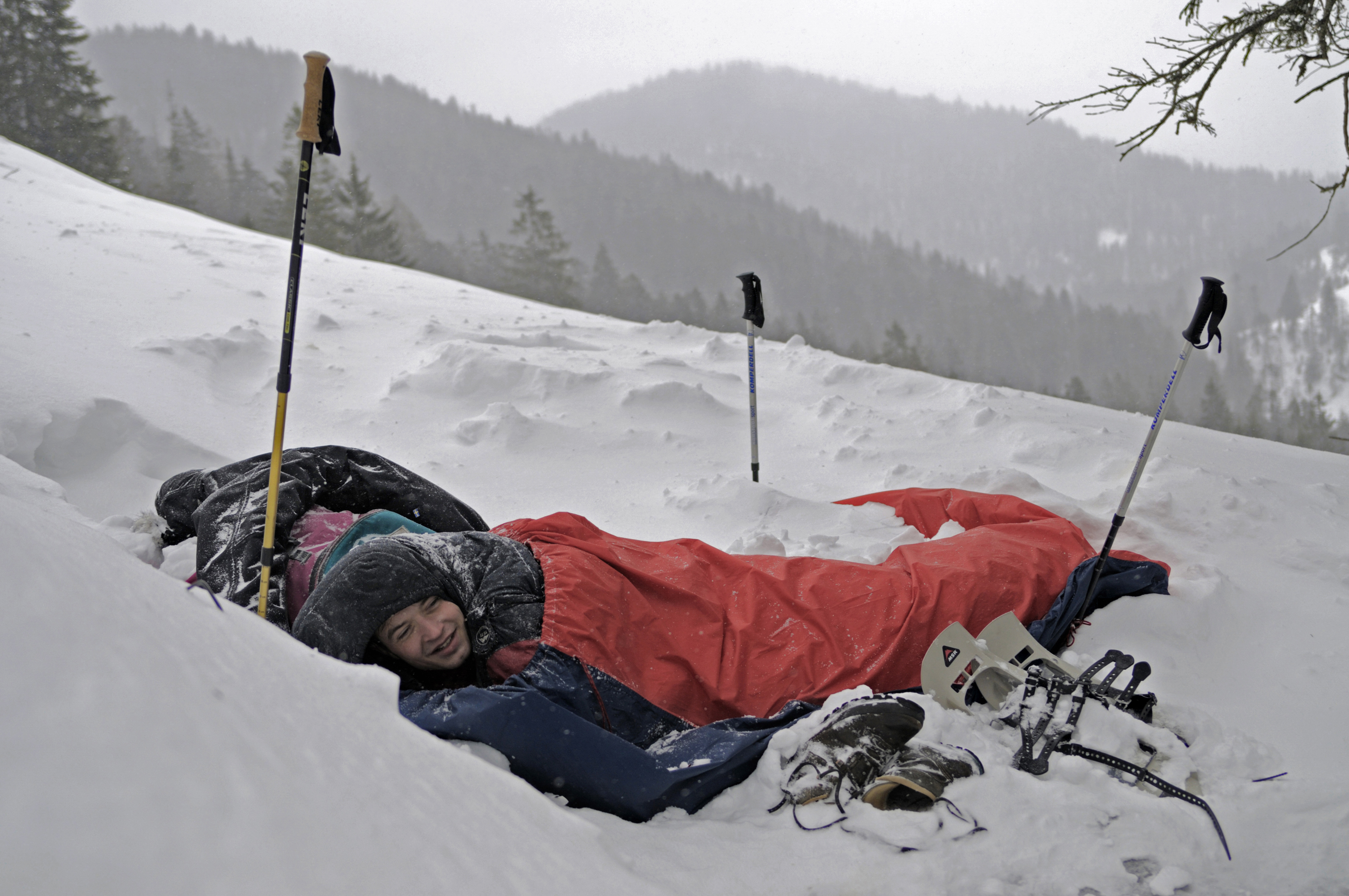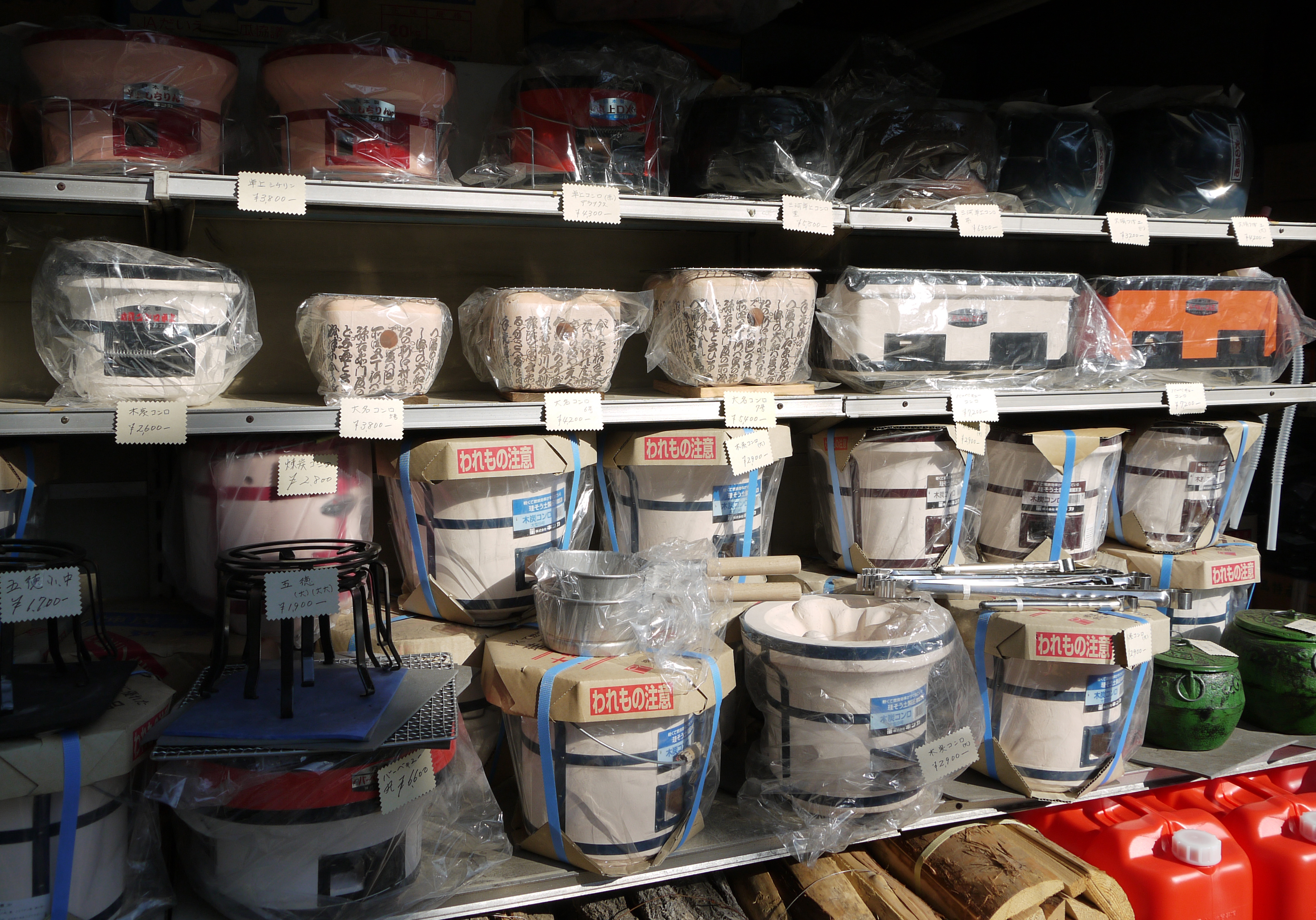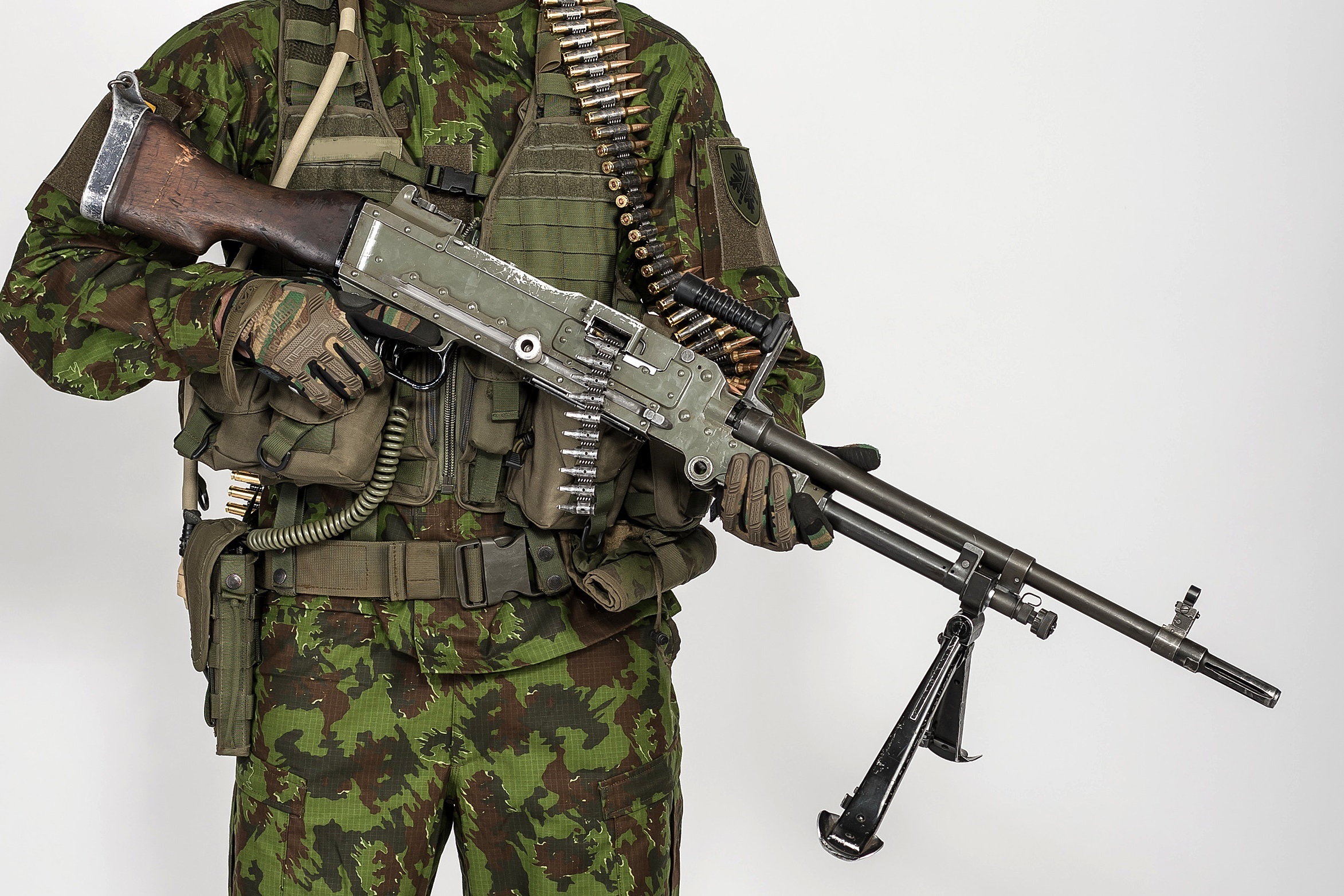|
Ultralight Backpacking
Ultralight backpacking is a subset of lightweight backpacking, a style of backpacking which emphasizes carrying the lightest and least amount of gear. While no technical standards exist, some United States hikers consider "ultralight" to mean an initial base weight of less than 4.5kg (10 pounds). Base weight is the weight of a fully loaded backpack at the start of a trip, plus the gear inside and outside it, excluding consumables such as food, water, and fuel (which vary depending on the duration and style of trip). Base weight can be lowered by reducing the weight of individual items of gear, or by choosing not to carry that gear. Ultralight backpacking is most popular among thru-hikers—those hikers on extended trips (often of several months, or more) requiring resupply. In the United States the terms "light" and "ultralight" often refer to backpackers who carry gear with a base weight below and respectively. These weights are more easily achievable for smaller hikers. Lar ... [...More Info...] [...Related Items...] OR: [Wikipedia] [Google] [Baidu] |
Bivouac2
{{disamb ...
Bivouac is a type of camp or shelter. The term may refer to: * Bivouac Peak, a mountain in the Teton Range, Grand Teton National Park, Wyoming, USA * A military camp, or an army camp * Bivouac shelter including a "bivy sack" or bivvy bag, an extremely lightweight alternative to traditional tent systems * Bivouac (ants), an ant nest constructed out of the living ant worker's own bodies * Bivouac (horse), an Australian thoroughbred racehorse Music * Bivouac (band), a UK indie rock band of the 1990s * ''Bivouac'' (album), a 1992 album by the U.S. band Jawbreaker * ''Happy Bivouac'', a 1999 album, and the title-track, by the Japanese band The Pillows * ''Tokyo Bivouac'', a 2003 mini-album by Japanese artist Suneohair is the performing name of Kenji Watanabe. He is best known for his contributions to the soundtrack of the anime adaptation of ''Honey & Clover'' and ''Honey and Clover II'', for which he provided the ending themes and . He has also provided the ... [...More Info...] [...Related Items...] OR: [Wikipedia] [Google] [Baidu] |
Dyneema Composite Fabric
Dyneema Composite Fabric (DCF), also known as Cuben Fiber (CTF3), is a high-performance non-woven composite material used in high-strength, low-weight applications. It is constructed from a thin sheet of ultra-high-molecular-weight polyethylene (UHMWPE, "Dyneema") laminated between two sheets of polyester. It is used in various applications that call for a fabric with high tensile strength, but where low weight is desirable, such as sails and ultralight backpacking equipment. The material was developed by the Cuben Fiber and Cubic Tech Corporations in the 1990s. In 2015, Cubic Tech was acquired by DSM, their supplier for the UHMWPE fiber. The product was subsequently renamed "Dyneema Composite Fabric" ("DCF"), a generic brand name DSM uses for all of their composite products which incorporate UHMWPE. History The name Cuben Fiber was coined by the press in reference to America³ (pronounced ''America Cubed''), the winner of the 1992 America's Cup. During the 1992 Cup, that yac ... [...More Info...] [...Related Items...] OR: [Wikipedia] [Google] [Baidu] |
Portable Stove
A portable stove is a cooking stove specially designed to be portable and lightweight, used in camping, picnicking, backpacking, or other use in remote locations where an easily transportable means of cooking or heating is needed. Portable stoves can be used in diverse situations, such as for outdoor food service and catering and in field hospitals. Since the invention of the portable stove in the 19th century, a wide variety of designs and models have seen use in a number of different applications. Portable stoves can be broken down into several broad categories based on the type of fuel used and stove design: unpressurized stoves that use solid or liquid fuel placed in the burner before ignition; stoves that use a volatile liquid fuel in a pressurized burner; bottled gas stoves; and gravity-fed "spirit" stoves. History Early example The shichirin, a lightweight charcoal stove, has been used in Japan in much the same form since at least the Edo period (1603-1868). Old shich ... [...More Info...] [...Related Items...] OR: [Wikipedia] [Google] [Baidu] |
Esbit
A hexamine fuel tablet (or heat tablet, Esbit) is a form of solid fuel in tablet form. The tablets burn smokelessly, have a high energy density, do not liquefy while burning and leave no ashes. Invented in Murrhardt, Germany, in 1936, the main component is hexamine, which was discovered by Aleksandr Butlerov in 1859. Some fuel tablets use 1,3,5-trioxane as another ingredient. ''Esbit'' is a genericized trademark that people often use to refer to similar products made by other companies. In most countries from the former Soviet bloc, fuel tablets are called ''dry alcohol''. Uses The tablets are used for cooking by campers, the military and relief organizations. They are often used with disposable metal stoves that are included with field ration packs. An Esbit beverage-can stove can be made by cutting off the bottom of an aluminium soft drink can, and turning it upside down to support the fuel tablet. A pot can be supported above this with a circle of chicken wire or me ... [...More Info...] [...Related Items...] OR: [Wikipedia] [Google] [Baidu] |
Beverage Can Stove
A beverage-can stove, or pop-can stove, is a do it yourself, ultralight, Alcohol (chemistry), alcohol-burning portable stove. It is made using parts from two aluminium can, aluminium beverage cans. Basic designs can be relatively simple, but many variations exist. Total weight, including a windscreen/stand, can be less than one ounce (28 g). The design is popular in ultralight backpacking due to its low cost and lighter weight than commercial stoves. This advantage may be lost on long hiking trips, where a lot of fuel is packed, since Alcohol (chemistry), alcohol has less energy per gram than some other stove fuels. Of the available fuels, methanol delivers the least energy, isopropyl alcohol delivers more, butanol is hardly ever used, and pure ethanol the most. Denatured alcohol and rubbing alcohol are frequently used for this purpose, as it often contains a mixture of ethanol and other alcohols. All but isopropyl alcohol burn with a smokeless flame; it can provide both lig ... [...More Info...] [...Related Items...] OR: [Wikipedia] [Google] [Baidu] |
Alcohol Stove
A portable stove is a cooking stove specially designed to be portable and lightweight, used in camping, picnicking, backpacking, or other use in remote locations where an easily transportable means of cooking or heating is needed. Portable stoves can be used in diverse situations, such as for outdoor food service and catering and in field hospitals. Since the invention of the portable stove in the 19th century, a wide variety of designs and models have seen use in a number of different applications. Portable stoves can be broken down into several broad categories based on the type of fuel used and stove design: unpressurized stoves that use solid or liquid fuel placed in the burner before ignition; stoves that use a volatile liquid fuel in a pressurized burner; bottled gas stoves; and gravity-fed "spirit" stoves. History Early example The shichirin, a lightweight charcoal stove, has been used in Japan in much the same form since at least the Edo period (1603-1868). Old shichi ... [...More Info...] [...Related Items...] OR: [Wikipedia] [Google] [Baidu] |
Survival Kit
A survival kit is a package of basic tools and supplies prepared as an aid to survival in an emergency. Civil and military aircraft, lifeboats, and spacecraft are equipped with survival kits. Survival kits, in a variety of sizes, contain supplies and tools to provide a survivor with basic shelter against the elements, help them to keep warm, meet basic health and first aid needs, provide food and water, signal to rescuers, and assist in finding the way back to help. Supplies in a survival kit normally include a knife (often a Swiss army knife or a multi-tool), matches, tinder, first aid kit, bandana, fish hooks, sewing kit, and a flashlight. Civilians such as forestry workers, surveyors, or bush pilots, who work in remote locations or in regions with extreme climate conditions, may also be equipped with survival kits. Disaster supplies are also kept on hand by those who live in areas prone to earthquakes or other natural disasters. For the average citizen to practice dis ... [...More Info...] [...Related Items...] OR: [Wikipedia] [Google] [Baidu] |
Ten Essentials
The Ten Essentials are survival items that hiking and Scouting organizations recommend for safe travel in the backcountry. The Ten Essentials first appeared in print in the third edition of '' Mountaineering: The Freedom of the Hills'' (January 1974). Many regional organizations and authors recommend that hikers, backpackers, and climbers rigorously ensure they have the ten essentials with them. However, personal preferences and differences in conditions may dictate otherwise and with experience most adventurers add and subtract from the list depending on the situation. Some ultralight backpackers do not always carry all of the items and believe it is an acceptable risk they take in order to travel light and fast. List The ninth edition of ''Mountaineering: The Freedom of the Hills'', published in 2017, defines the Ten Essentials as: # Navigation: map, altimeter, compass, GPS device, personal locator beacon # Headlamp: with LED bulb and spare batteries # Sun protection: s ... [...More Info...] [...Related Items...] OR: [Wikipedia] [Google] [Baidu] |
Ultra-high-molecular-weight Polyethylene
Ultra-high-molecular-weight polyethylene (UHMWPE, UHMW) is a subset of the thermoplastic polyethylene. Also known as high-modulus polyethylene, (HMPE), it has extremely long chains, with a molecular mass usually between 3.5 and 7.5 million amu. The longer chain serves to transfer load more effectively to the polymer backbone by strengthening intermolecular interactions. This results in a very tough material, with the highest impact strength of any thermoplastic presently made. UHMWPE is odorless, tasteless, and nontoxic. It embodies all the characteristics of high-density polyethylene (HDPE) with the added traits of being resistant to concentrated acids and alkalis, as well as numerous organic solvents. It is highly resistant to corrosive chemicals except oxidizing acids; has extremely low moisture absorption and a very low coefficient of friction; is self-lubricating (see boundary lubrication); and is highly resistant to abrasion, in some forms being 15 times more resista ... [...More Info...] [...Related Items...] OR: [Wikipedia] [Google] [Baidu] |
Silnylon
Silnylon, a portmanteau of "silicone" and "nylon", is a synthetic fabric used mainly in lightweight outdoor gear. It is made by impregnating a thin woven nylon fabric with liquid silicone from both sides. This makes it strong for its weight, as the silicone substantially improves the tear strength. It is also highly waterproof, but not breathable. Many colours are available. It is used in the manufacture of backpacks, tarps and tarp tents, bivy bags, etc., particularly by ultralight backpackers. Several types of silnylon are produced. The common type is a quiet, silky, very slippery fabric. The variant known as "crisp silnylon" is lighter, but brittle, noisy in movement, and easily torn. Some versions are made from the stronger type-66 nylon and are used for applications like parachutes and hot air balloons. Some use a blend of silicone and polyurethane Polyurethane (; often abbreviated PUR and PU) refers to a class of polymers composed of organic units joined by carbamate ( ... [...More Info...] [...Related Items...] OR: [Wikipedia] [Google] [Baidu] |
Ripstop Nylon
__NOTOC__ Ripstop fabrics are woven fabrics, often made of nylon, using a reinforcing technique that makes them more resistant to tearing and ripping. During weaving, stronger (and often thicker) reinforcement yarns are interwoven at regular intervals in a crosshatch pattern. The intervals are typically 5 to 8 millimeters (0.2 to 0.3 in). Thin and lightweight ripstop fabrics have a 2-dimensional structure due to the thicker yarns being interwoven in thinner cloth. Older lightweight ripstop fabrics display the thicker interlocking thread patterns in the material quite prominently, but more modern weaving techniques make the ripstop threads less obvious. A similar effect can be achieved by weaving two or three fine yarns together at smaller intervals.Fairchild's Dictionary of Textiles, 7th edition, pg. 474 Advantages of ripstop are the favourable strength-to-weight ratio and that small tears can not easily spread. Fibers used to make ripstop include cotton, silk, polyester, and ... [...More Info...] [...Related Items...] OR: [Wikipedia] [Google] [Baidu] |
Balaclava (clothing)
A balaclava, also known as a balaclava helmet or ski mask, is a form of cloth headgear designed to expose only part of the face, usually the eyes and mouth. Depending on style and how it is worn, only the eyes, mouth and nose, or just the front of the face are unprotected. Versions with enough of a full face opening may be rolled into a hat to cover the crown of the head or folded down as a collar around the neck. History Similar styles of headgear were known in the 19th century as the ''Uhlan cap'' worn by Polish and Prussian soldiers, and the ''Templar cap'' worn by outdoor sports enthusiasts. The name comes from their use at the Battle of Balaclava during the Crimean War of 1854, referring to the town near Sevastopol in the Crimea, where British troops there wore knitted headgear to keep warm. Handmade balaclavas were sent over to the British troops to help protect them from the bitter cold weather. British troops required this aid, as their own supplies (warm clothing, ... [...More Info...] [...Related Items...] OR: [Wikipedia] [Google] [Baidu] |






